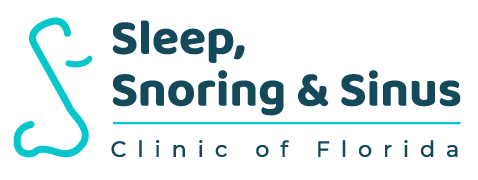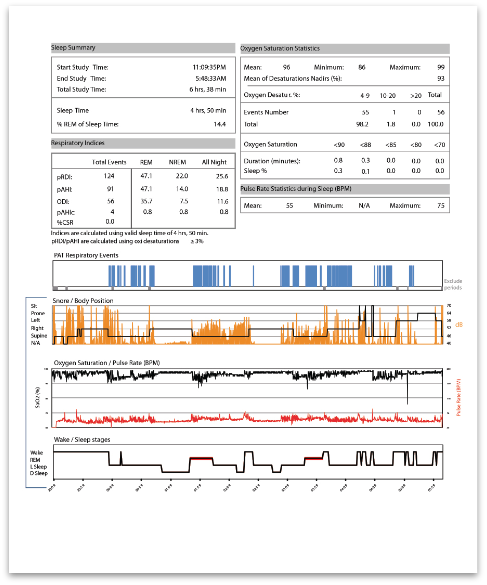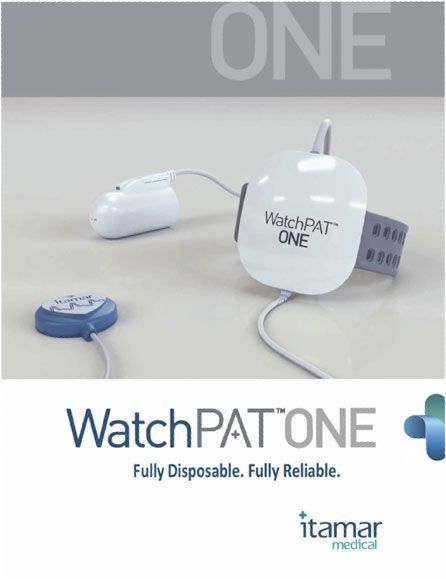Plantation Location
Coral Gables Location
Plantation Location
Pembroke Pines Location
Plantation Location
Pembroke Pines Location
WatchPAT Home Sleep Testing
At Sleep, Snoring & Sinus Clinic Of Florida, we are dedicated to helping our patients enjoy a good night’s sleep. The WatchPAT home sleep apnea testing system is just one example of how we use the latest medical treatments and diagnostic technology to get our patients closer to that goal. This diagnostic test allows us to get meaningful, actionable data about our patients’ sleep without disrupting their routines. Using this system, we may be able to diagnose or rule out sleep apnea for you without you having to complete a traditional in-office sleep study.
How It Works
The WatchPAT home sleep apnea testing system is incredibly easy to use. There are only three places where the system comes into contact with your body: a small sensor taped to your sternum, a watch pad worn on the wrist of your non-dominant hand, and a probe that goes on one of your fingers. You can put the system on in seconds with the help of the illustrated guide included with the system. Once it’s on, you can head to bed and sleep as you normally would.
While you sleep, the WatchPAT system will collect a host of data for the doctor to analyze. The system can report how long you sleep, how long you spend in each stage of sleep, and whether you had any sleep apnea events. Once the doctor has this information, they can determine whether you’re suffering from sleep apnea and devise a treatment plan to help you enjoy a more restful night’s sleep.

Why WatchPAT Beats a Traditional Sleep Study
Anyone who has “enjoyed” a broken night’s sleep in a comfortable hotel room or as a guest in someone else’s home can attest that people don’t often sleep well away from their own homes and beds. Unfortunately, a traditional sleep study starts by asking you to do just that, making these sleep studies quite stressful and inconvenient.
In contrast, the WatchPAT system allows you to sleep in your own bed, surrounded by your familiar comforts. The system is small and simple, unlike traditional sleep study equipment. If you need to get up during the night (say, to use the restroom), you won’t have to untangle yourself from a host of wires and sensors. You’ll also be able to sleep in whatever positions you prefer. And of course, since you’re spending the night at home, you can practice your normal bedtime and wake-up routines without having to factor in traveling to and from a sleep testing clinic.
The Peripheral Arterial Tone (PAT®)
The Peripheral Arterial Tone (PAT®) signal is a non-invasive measure of the arterial pulsatile volume changes at the fingertip.
It is a proprietary technology used to identify respiratory events. Using specific signal patterns, the algorithm provides two indices used in determining the degree of sleep apnea, Apnea-Hypopnea Index (AHI) and Respiratory Disturbance Index (RDI). The PAT® Signal is measured from the fingertip by recording finger arterial pulsatile volume changes since the finger has its unique physiology with;
- High vascular density
- Convenient site for measurement
- Tremendous blood flow variability (1-100ccm/100g/sec)
- Reflection of sympathetic nervous system activation, such that terminates any apnea episode
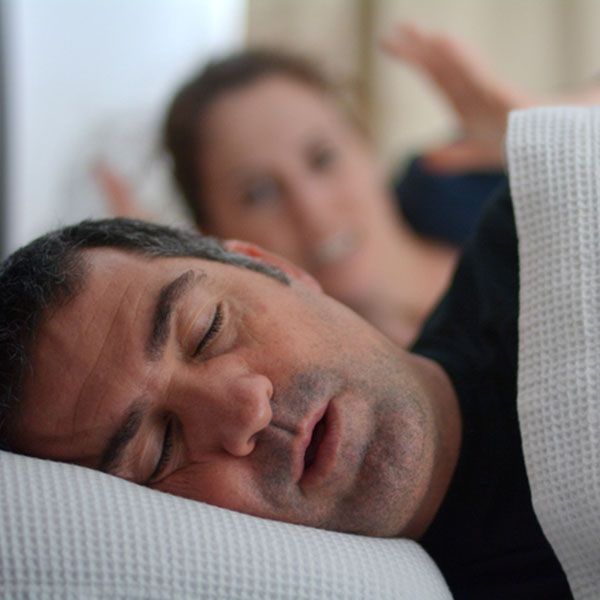
PAT®️ Technology for Sleep Apnea Identification
The termination of sleep disordered breathing events is associated with an increase in heart rate, blood pressure, and sympathetic activation. This increase in sympathetic activation results in peripheral vasoconstriction. Peripheral Arterial Tonometry (PAT) measures arterial pulse volume changes in the finger as a result of vasomotion (vasoconstriction and vasodilatation). WatchPAT® home sleep apnea tests use the PAT® signal to detect sleep apnea events. The algorithm analyses the PAT® signal together with the pulse rate and the oximetry to accurately diagnose the sleep apnea indices.
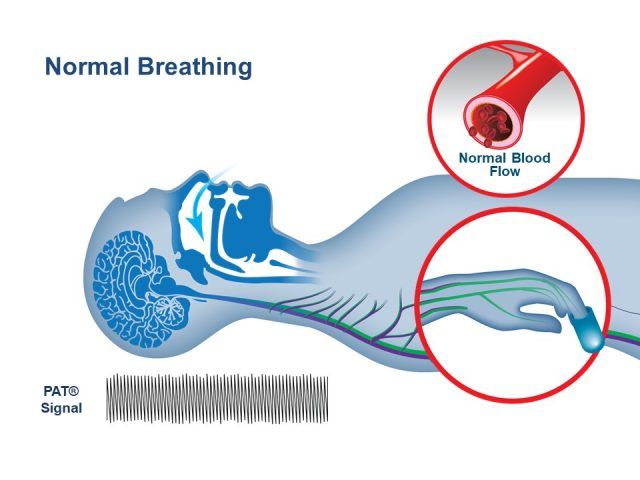
PAT® technology is clinically validated against Polysomnography
Polysomnography (PSG) is considered the “gold standard” for sleep assessment of Obstructive Sleep Apnea (OSA). Numerous validations studies demonstrate a high degree of correlation in RDI, AHI and ODI during simultaneous recording of WatchPAT and PSG with R= 0.879 (RDI)-0.893 (AHI) and 0.942 (ODI).1
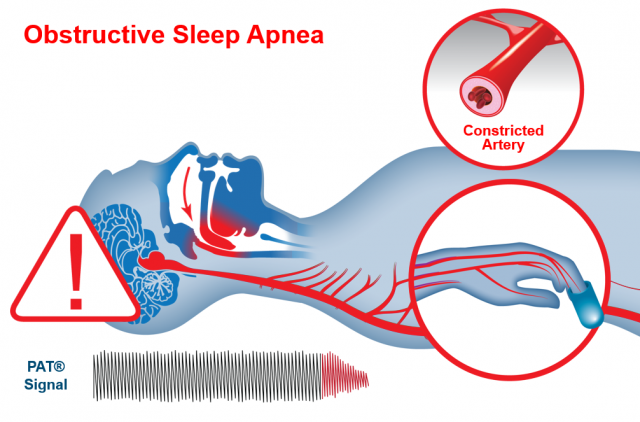
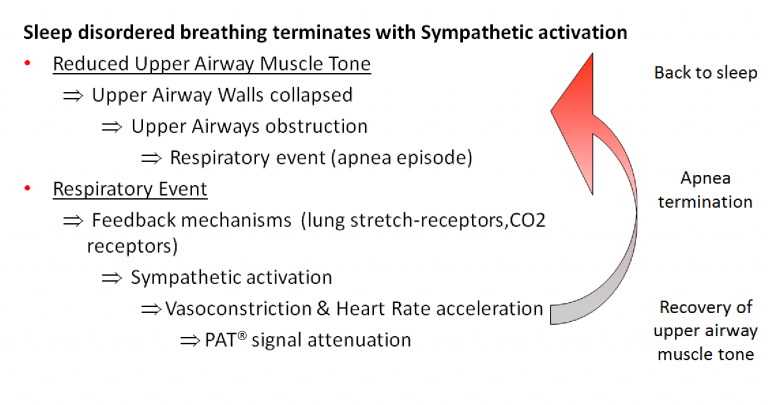
PAT Technology FAQ
-
How does WatchPAT detect Apnea, Hypopnea, and Respiratory Effort Related Arousal (RERA) events?
WatchPATM utilizes Peripheral Arterial Tone (PAT), a special physiological signal that mirrors changes in the autonomic nervous system (ANS) caused by respiratory disturbances during sleep. The ANS regulates many of our basic functions and it does this without our conscious control. Among its activities are the regulation of blood vessel size and blood pressure, airflow in the lungs, and the heart’s electrical activity and ability to contract. WatchPAT’s automatic algorithm analyzes the PAT signal amplitude along with the heart rate and oxygen saturation to identify and classify breathing problems while you sleep. Using specific signal patterns, the algorithm provides two indices that allow a diagnosis of sleep apnea:
- AHI (Apnea/Hypopnea Index) is an index used to calculate sleep apnea severity based on the total number of complete cessations (apneas) and partial obstructions (hypopneas) of breathing per hour of sleep.
- RDI (Respiratory Disturbance Index) is used to assess the severity of sleep apnea by measuring respiratory efforts, or RERAs (Respiratory Effort Related Arousals). A RERA is an arousal from sleep that follows 10 seconds or more of increased respiratory effort but does not meet the criteria for apnea or hypopnea. The snoring sensor enables the clinician to determine if the respiratory events are obstructive and the body position sensor enables the clinician to determine if there is a positional component to the sleep apnea
-
How does WatchPAT detect rapid eye movement (REM) from the finger?
Rapid eye movement (REM) sleep is associated with considerable attenuation of the PAT signal and physiology coupled with specific variations in the PAT amplitude and rate. Based on this specific variability in the PAT and pulse rate signals, REM sleep stage is differentiated from non-REM sleep. In addition, it is differentiated from the wake state by WatchPAT’s advanced actigraphy algorithms. This is clinically important to prevent under-treatment of apnea if predominantly REM-related.
-
How does the WatchPAT home sleep apnea test detect sleep architecture?
WatchPAT’s sleep/wake detection is based on data recorded by the built-in actigraph. The propriety software’s automatic actigraph algorithm discriminates between sleep and wake states in normal subjects and those with Obstructive Sleep Apnea (OSA). This algorithm makes WatchPAT’s home sleep apnea test (HSAT) superior to all other actigraph devices—most of them fail when used with OSA subjects. WatchPAT’s sleep/wake algorithm has been validated and published in peer-reviewed journals. The results show very good agreement between actigraphy and PSG in determining sleep efficiency, total sleep time, and sleep latency (agreement 86% in normal subjects, 86%-mild OSA, 84%-moderate OSA, 80% severe OSA).
-
How does WatchPAT differentiate between respiratory arousals and other events like Periodic Limb Movement (PLM) related arousals and spontaneous arousals?
The algorithms differentiate between respiratory related arousals and Periodic Limb Movement (PLM) related or spontaneous arousals via detection of specific patterns in the PAT signal coupled with the presence or absence of unique dynamics of the pulse oximetry signal.
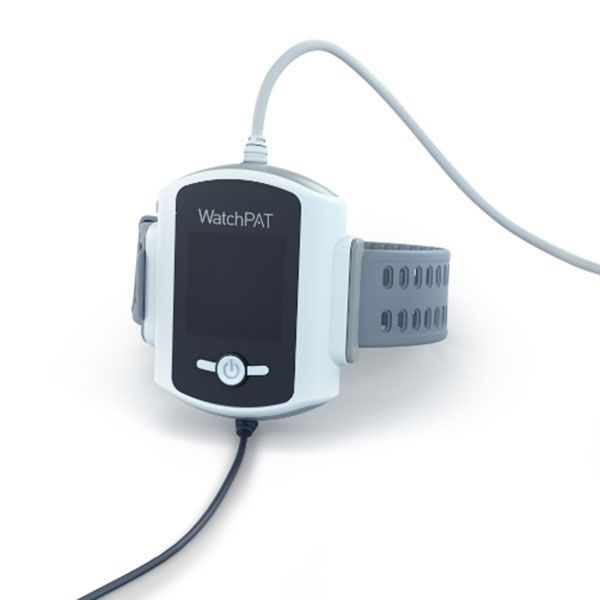
WatchPat 300 Simple. Accurate. Reliable.
WatchPAT®️ 300 is an innovative diagnostic Home Sleep Apnea Test (HSAT) that utilizes the proprietary Peripheral Arterial Tone signal (PAT®️) to enable simple, accurate and reliable sleep apnea testing while avoiding the complexity and discomfort associated with traditional air-flow based systems.
Simple
- 3 points of contact
- Intuitive design with improved patient comfort
- Improved workflow with rapid download time and one-step processing
Accurate
- 7 Channels with 4 respiratory indices
- 89% Correlation to PSG
- Accurate diagnosis with true sleep time and sleep staging
Reliable
- 98% study success rate
- Approved measure in the 2017 AASM HSAT Clinical Practice Guidelines
- Scalable cost effective solutions
Central Plus Module
- Central Sleep Apnea (CSA) identification
- Percentage of Cheyne-Stokes Respiration
WatchPat One: Fully Disposable. Fully Reliable
WatchPAT ONE offers the same simplicity, accuracy and reliability as other WatchPAT products. The simple smartphone app transmits the WatchPAT ONE's data from 7 channels to the cloud. As soon as the study is completed the clinician can review the automated study results.
Improved Workflow
- Immediate access to sleep data and study results
- Data interpretation anytime, anywhere with cloud based solution
- Requires less back-office support
Disposable
- No return shipment
- No cleaning, No downloading or charging
- No infection risk
HSAT Program Growth
- Ideal for patients outside service area
- No capital investment required
- Simple way to reduce periodic backlog
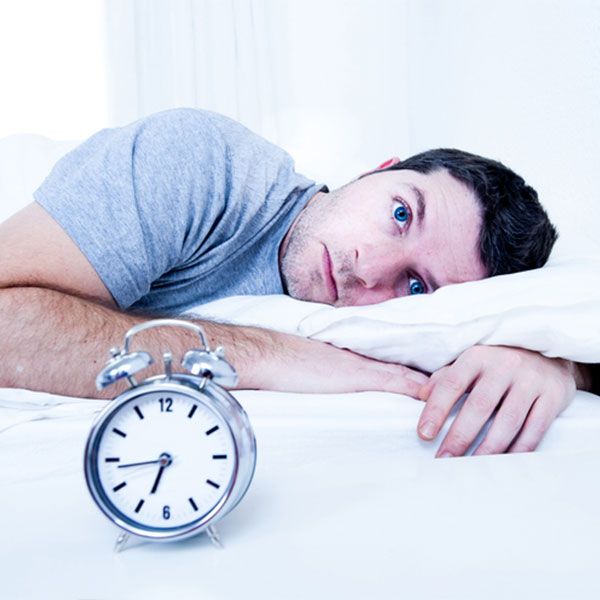
Prevent up to 20% Misdiagnosis with True Sleep Time
- WatchPAT calculates AHI and RDI using the patient’s True Sleep Time rather than the recorded time used in most commercially available HSAT’s
- True Sleep Time reduces the risk of misdiagnosis and misclassification that has been reported up to 20% with using total recording time
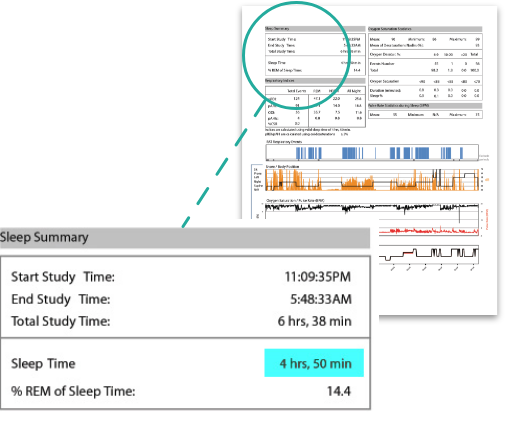
Improved Accuracy with Sleep Architecture
WatchPAT’s clinically validated Sleep Architecture provides information on sleep staging including sleep efficiency, sleep latency and REM latency4-5. It also provides the added value of detecting REM related sleep apnea with REM and non-REM AHI.
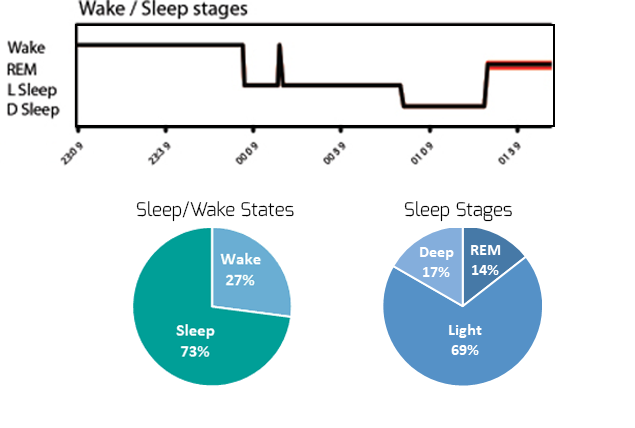
High Accuracy with Central Sleep Apnea Identification
WatchPAT has been clinically proven to detect all types of apnea events. The Central PLUS Module enables specific identification of Central Sleep Apnea (CSA) and Percent of Sleep Time with Cheyne-Stokes Respiration.

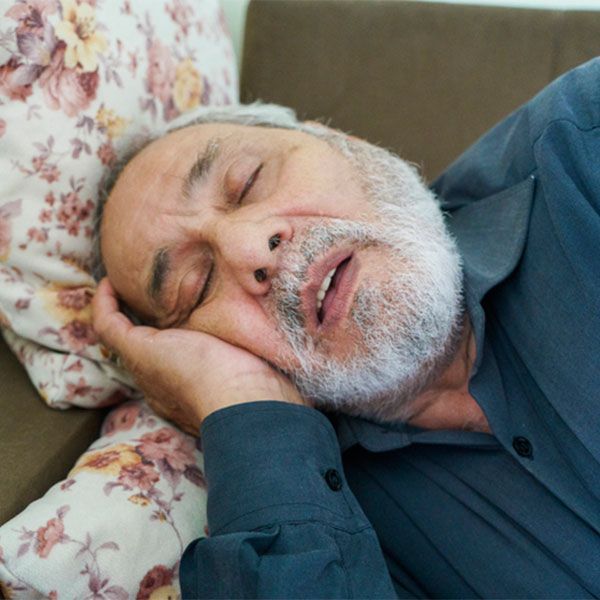
Comprehensive Automated Report in Just Seconds
- AHI Apnea/Hypopnea per hour
- Central AHI Apnea/Hypopnea per hour
- Apnea Episodes through the night
- Snoring and Body Position
- Oxygen & Heart Rate (note precipitous drops)
- Sleep Stages (unique to WatchPAT)
- Body Position Statistics and Graphic Display
- Snoring Statistics
- Sleep Stages Graphic Display
- Respiratory Indices Chart
- AHI Severity Scale
WatchPat One Fully Disposable. Fully Reliable
It’s Simple
3 points of contact for outstanding patient compliance with 98% success rate4.
It’s Accurate
The WatchPAT Home Sleep Apnea Test is clinically validated with an 89% correlation to PSG5.
It’s Reliable
The PAT signal is an approved measure in the 2017 AASM HSAT Clinical Practice Guidelines for Adults with OSA.
Call Today!
If you would like to know more about the WatchPAT system and how we could use it to diagnose and treat your sleep issues, we invite you to
contact us today. We would be happy to schedule an appointment for you, tell you more about the system, and get you on the road to a better night’s sleep. Call today to get started!
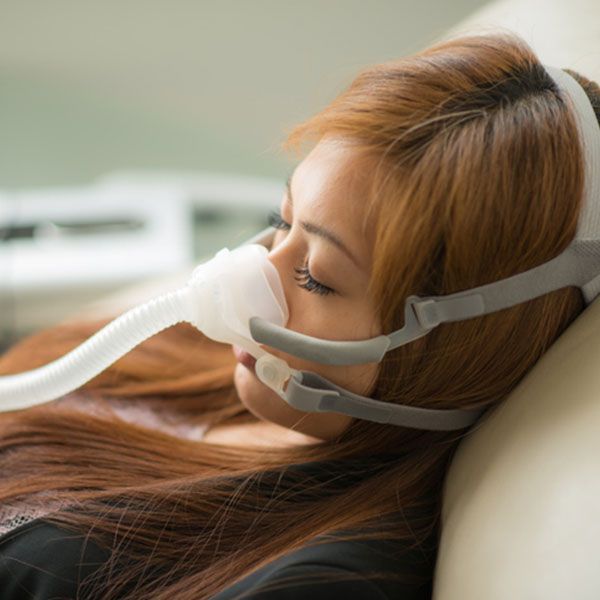
Request A Demo Of Our Home Sleep Apnea Test
Contact Us
We will get back to you as soon as possible.
Please try again later.
Make An Appointment
Call us and Send us a message!
Contact Us
Thanks for your message!
I'll get back to you as soon as I can.
Please try again later.
CONTACT US
Plantation:
100 NW 82nd Ave, Suite 405, Plantation, FL 33324
Phone:
(305) 432-9785
Fax: (786) 946-2831
Pembroke Pines: 10071 Pines Blvd, Suite C, Pembroke Pines, FL 33024
Phone:
(954) 628-8453
Fax: (954) 437-6252
OUR HOURS
Monday: 8am - 4pm
Tuesday: 8am - 4pm
Wednesday: 8am - 4pm
Thursday: 8am - 4pm
Friday: 8am - 4pm
Saturday: Closed
Sunday: Closed
QUICK LINKS
Service Areas: Miami-Dade County, Broward County, Palm Beach County
